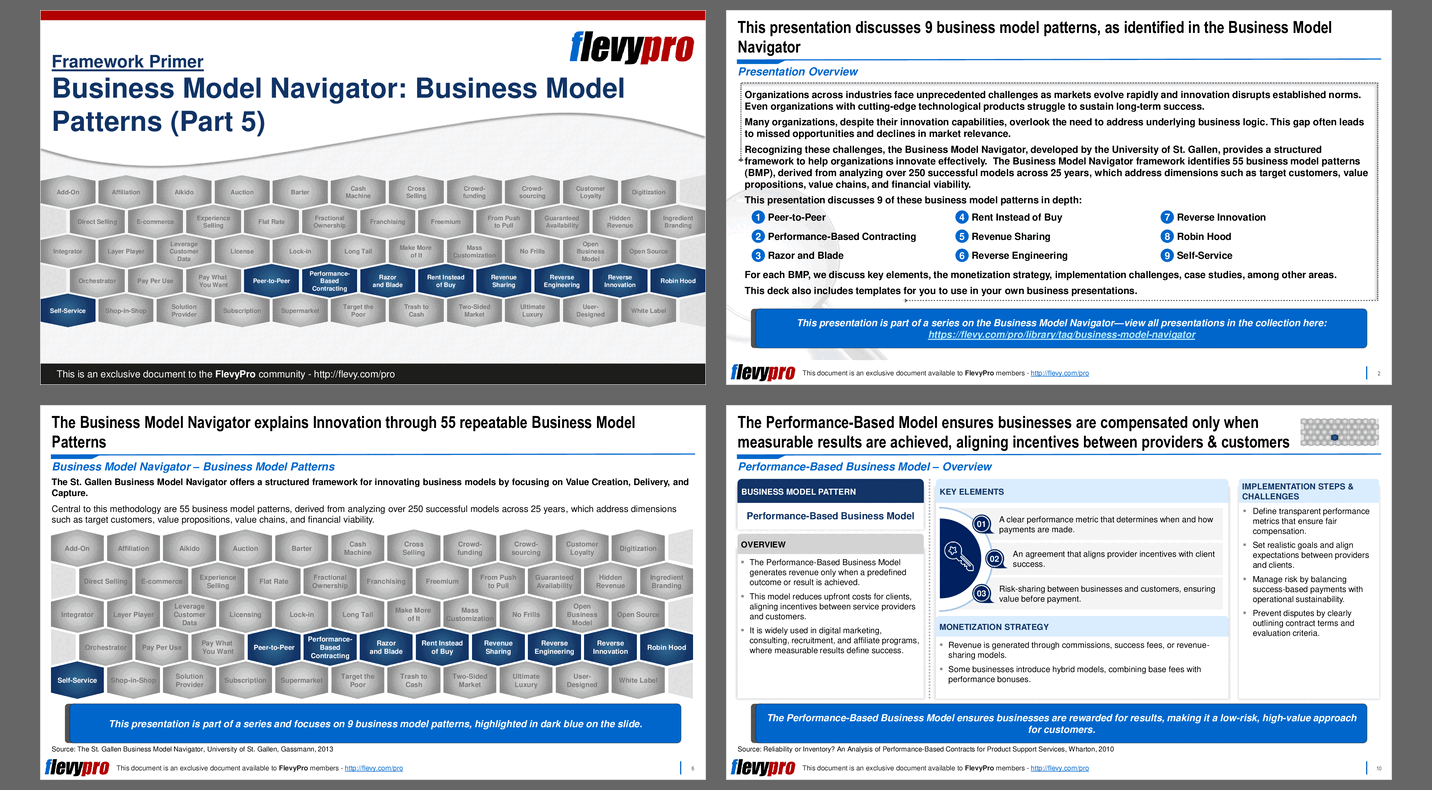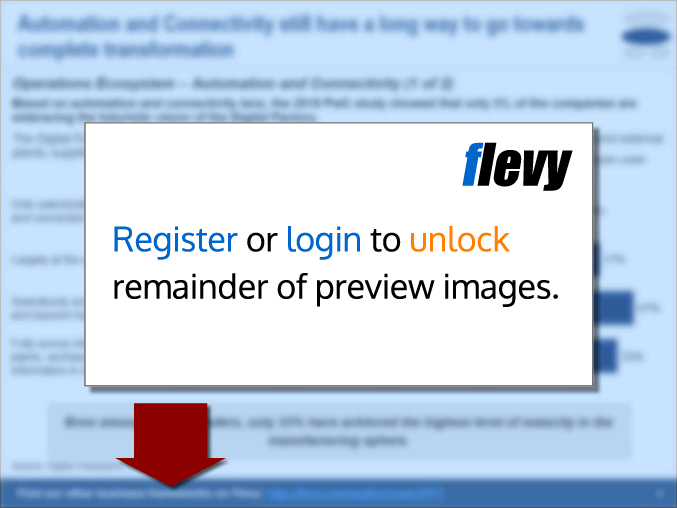Business Model Navigator: Business Model Patterns (Part 5) (PowerPoint PPTX Slide Deck)
PowerPoint (PPTX) 38 Slides FlevyPro Document
BUSINESS MODEL DESIGN PPT DESCRIPTION
Organizations across industries face unprecedented challenges as markets evolve rapidly and innovation disrupts established norms. Even organizations with cutting-edge technological products struggle to sustain long-term success.
Many organizations, despite their innovation capabilities, overlook the need to address underlying business logic. This gap often leads to missed opportunities and declines in market relevance.
Recognizing these challenges, the Business Model Navigator, developed by the University of St. Gallen, provides a structured framework to help organizations innovate effectively. The Business Model Navigator framework identifies 55 business model patterns (BMP), derived from analyzing over 250 successful models across 25 years, which address dimensions such as target customers, value propositions, value chains, and financial viability.
This PPT presentation discusses 9 of these business model patterns in depth:
1. Peer-to-Peer – The Peer-to-Peer (P2P) Business Model facilitates direct transactions between individuals, bypassing traditional institutions or centralized providers.
2. Performance-Based – The Performance-Based Business Model generates revenue only when a predefined outcome or result is achieved.
3. Razor and Blade – The Razor and Blade Business Model attracts customers with a low-cost or subsidized core product while generating recurring revenue from essential add-ons, refills, or accessories.
4. Rent Instead of Buy – The Rent Instead of Buy Business Model allows customers to access products or services for a limited time without the financial burden of ownership.
5. Revenue Sharing – The Revenue Sharing Business Model allows businesses, partners, or individuals to split earnings based on agreed-upon terms, ensuring mutual benefit.
6. Reverse Engineering – The Reverse Engineering Business Model involves analyzing existing products or technologies to replicate, enhance, or develop competitive alternatives.
7. Reverse Innovation – The Reverse Innovation Business Model focuses on creating innovative, low-cost products or services for emerging markets and later scaling them to developed markets.
8. Robin Hood – The Robin Hood Business Model balances accessibility and profitability by charging premium customers higher fees to subsidize services for lower-income users.
9. Self-Service – The Self-Service Business Model allows customers to perform tasks traditionally handled by employees, increasing convenience while lowering operational costs.
For each BMP, we discuss key elements, the monetization strategy, implementation challenges, case studies, among other areas.
This deck on business model patterns also includes PPT templates for you to use in your own business presentations.
Got a question about the product? Email us at flevypro@flevy.com.
Source: Best Practices in Business Model, Business Model Navigator PowerPoint Slides: Business Model Navigator: Business Model Patterns (Part 5) PowerPoint (PPTX) Presentation Slide Deck, LearnPPT Consulting
Did you need more documents?
Consider a FlevyPro subscription from $39/month. View plans here.
For $10.00 more, you can download this document plus 2 more FlevyPro documents. That's just $13 each.







